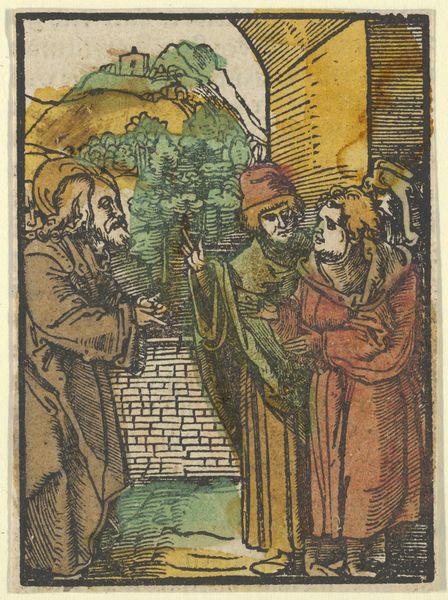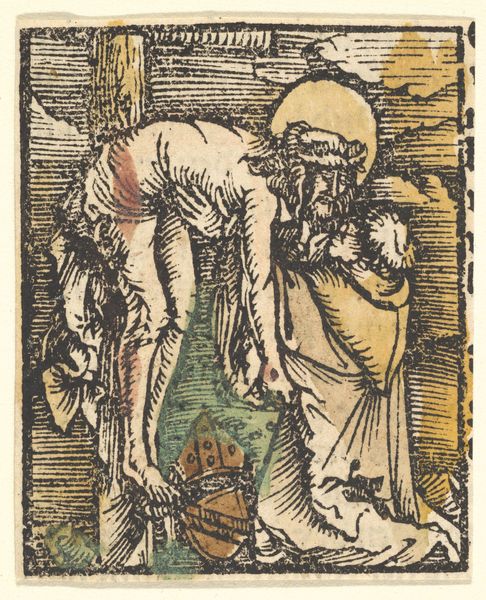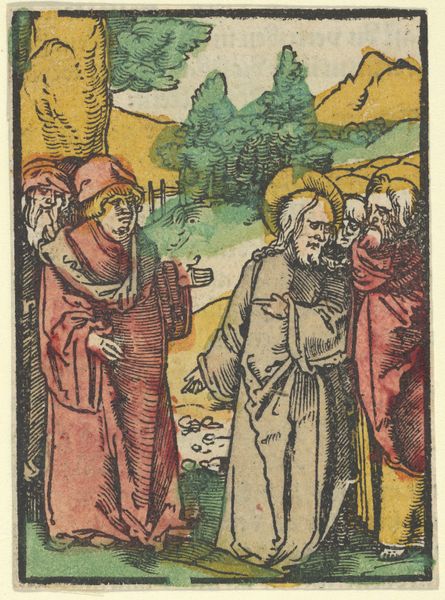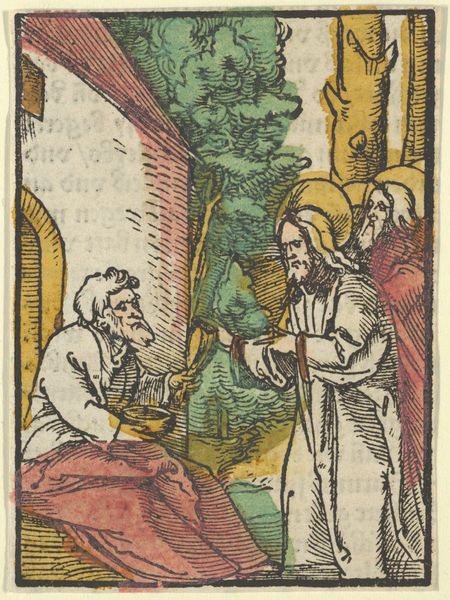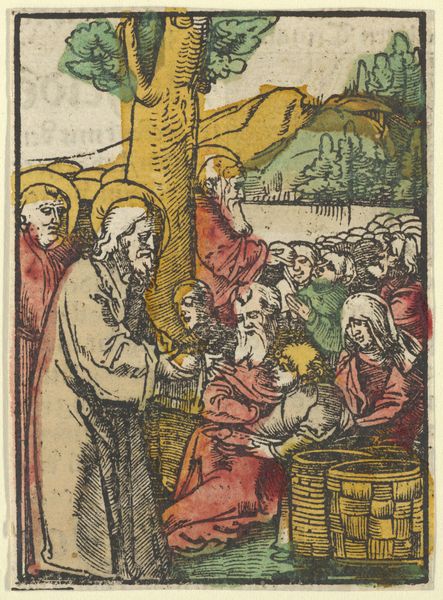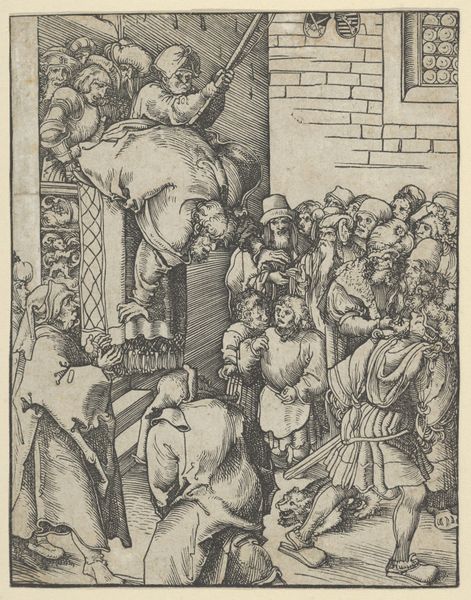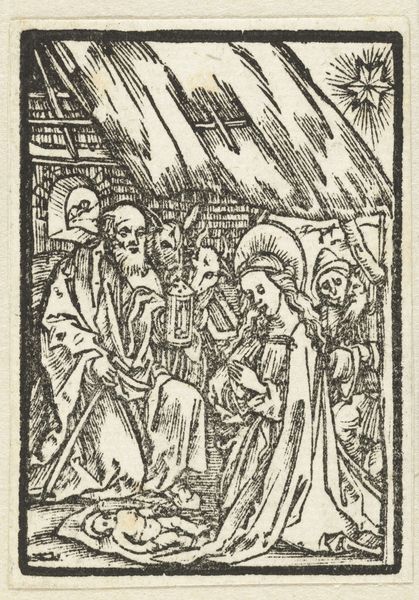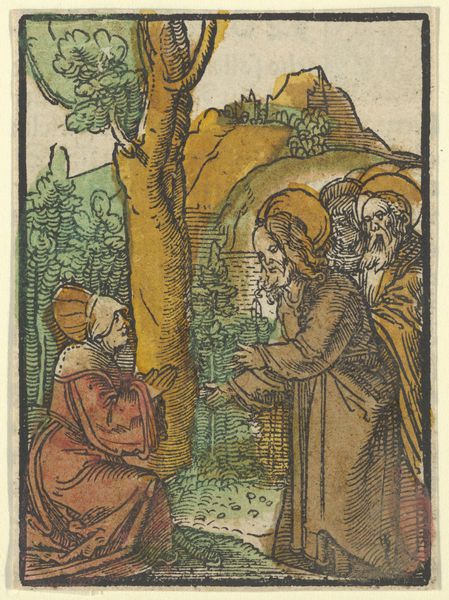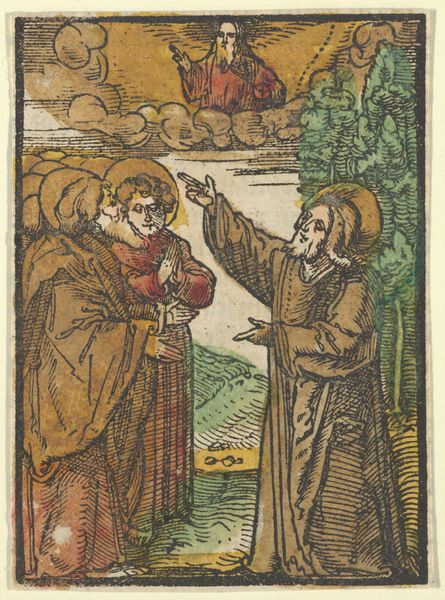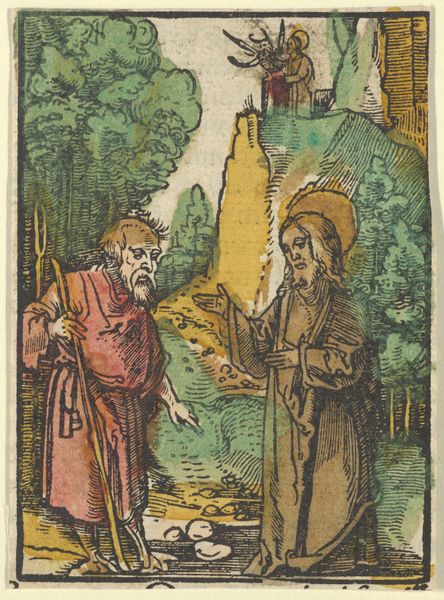
Christ Healing the Possessed, from Das Plenarium 1517
drawing, print, woodcut
drawing
narrative-art
figuration
coloured pencil
woodcut
history-painting
northern-renaissance
christ
Dimensions: Sheet: 3 11/16 × 2 11/16 in. (9.4 × 6.8 cm)
Copyright: Public Domain
Curator: We are looking at “Christ Healing the Possessed,” a hand-colored woodcut created around 1517 by Hans Schäufelein. It's currently held at the Metropolitan Museum of Art. Editor: My first thought is how unsettling this piece is despite its small scale and almost whimsical coloration. The contrast between the lined figures and the wash of colors really emphasizes the discomfort in the scene. Curator: The artist employs line expertly to create form and texture. Look at the varied width of the lines in Christ's robes. Also note the architectural elements in the background are purely delineated through parallel strokes. Editor: Precisely! The woodcut, and particularly its coloration, has to be considered in its specific social and religious context of the Northern Renaissance. The intense drama evokes questions about societal beliefs surrounding sickness and possession at that time. Who was considered 'possessed', and what societal power dynamics are being played out here? Curator: Yes, while the scene may seem straightforward in its narrative presentation, there’s a sophistication to how the artist uses color to create zones of light and shadow, directing our eye towards key figures and actions. Editor: The possessed figure is pallid in complexion compared to the healthier hues given to Christ and his followers. The scene also serves as a critique of existing power structures through a religious narrative; it portrays an alternative version of earthly healing against medical or philosophical treatment of the era. It serves to highlight who had power, and in what domains of life. Curator: And the architecture—stark and rigidly defined—emphasizes the stark contrast between divine order and earthly suffering, creating an interesting binary of interior vs exterior spaces too. Editor: That tension is indeed palpable. It makes me reflect upon not just individual narratives, but collective anxieties visualized within artistic expression from this era. What do these colors say about our historical construction of morality, religion and social authority during the early 16th century? Curator: Indeed. Analyzing Schaüfelein's masterful woodcut prompts introspection of societal paradigms, power relations, as well as compositional elements. Editor: Ultimately this print reflects collective religious aspirations while critiquing systems of earthly power.
Comments
No comments
Be the first to comment and join the conversation on the ultimate creative platform.

